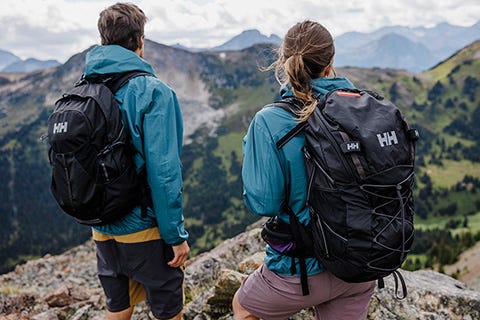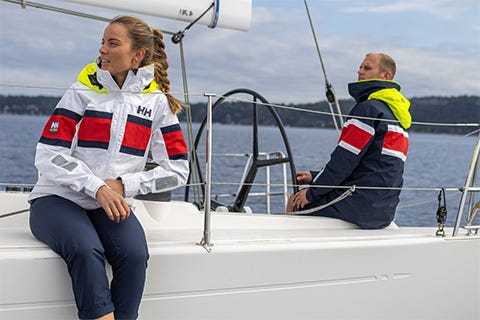
Local Storage seems to be disabled in your browser.
For the best experience on our site, be sure to turn on Local Storage in your browser.
Local Storage seems to be disabled in your browser.
For the best experience on our site, be sure to turn on Local Storage in your browser.
November 03, 2023 Update: April 05, 2024 3 min read
A little care goes a long way in maintaining the performance level and extending the life of your base layers.
Your gear will last longer, feel fresher, and perform at its best if you wash it correctly. In this guide, we provide instructions for washing all base layer types (synthetic, wool, mixed fabric).
A base layer is any layer of clothing or any garment that is worn directly against the skin and hair. Base layers are typically designed to be breathable, transport moisture away from the body and have an element of flexibility. They are especially useful for outdoor adventures like skiing, hiking and sailing, meaning you can expect to work up a sweat (and some odor along the way!).
Rinse your base layer in water immediately after use. This will remove bacteria and reduce the amount of times you need to wash it over the lifetime of the garment.
Some people prefer synthetic base layers made of polyester, nylon, or similar fibers. Others prefer fabrics like merino wool. All our base layers, designed as performance apparel, require intentional (but simple) care, in order to keep performing at their best.
Includes: LIFA® and LIFA® Active Solen
1. PREPARE YOUR BASE LAYER: Wash your synthetic base layers separately from other laundry items like cotton shirts, jeans, and towels.
2. USE TECHNICAL CLEANER: Avoid regular laundry detergent and use a technical cleaner like Grangers Active Wash or a similar biodegradable product designed specifically for synthetic base layers. Follow the instructions on the bottle for the right amount based on your load size.
3. RUN WASH CYCLE: Follow the care label instructions on your base layers for the appropriate water temperature.
4. DRY: Air dry your base layers whenever possible. If needed, check the care label; some items may be suitable for tumble drying on a low setting.

Includes: LIFA® Merino and merino wool
1. PREPARE YOUR BASE LAYERS: wash your wool base layers separately in their load. Avoid mixing wool base layers with other regular household laundry like cotton shirts, jeans, and towels.
2. USE A TECHNICAL CLEANER: Instead of standard detergent, opt for a gentle technical cleaner specifically designed for wool base layers, such as Grangers Merino Wash or a similar biodegradable wool-specific product. This will replace regular laundry detergent. Follow the instructions on the bottle to determine the appropriate amount based on your load size.
3. RUN WASH CYCLE: Follow the instructions on the garment care label regarding water temperature.
4. DRY YOUR BASE LAYERS: Air drying is recommended, but the care labels. Some might be suitable for tumble drying on a low setting.
For any additional gear care questions, please contact our Customer Care team in your region.
Here at Helly Hansen, we are known for our LIFA® technology, which we developed in the 70s to bring the first technical synthetic base layer to the market. Since then, we have adapted and expanded its use, creating a wider range of base layers and activewear that can be used all year round.
Our Solen line is an application of our LIFA® Active fabric, combined with recycled coffee ground technology from S’Cafe. Since it is composed of primarily synthetic fabric, you wash SOLEN like you wash your other synthetic fabric base layers.
No need to panic. A couple washes with a technical cleaner will remove all the residue left behind by your standard detergent, allowing your base layer to be refreshed in its breathability and fabric integrity.
Our Base Layer Finder can help you determine which base layer is right for you!
Yes, you often can! Running back-to-back cycles with a technical cleaning and deodorizing product like Nikwax can eliminate odors that have been deeply embedded in your base layers, giving you the opportunity to start feeling comfortable wearing them again. Nobody wants to wear base layers that start stinking after 2 minutes of wearing them, but there is hope!
Cotton does not have the same fabric properties and performance functionalities that synthetic or wool-based fabrics do, so they do not require any technical cleaners, and they can be washed using standard detergent. Nothing bad will happen if you use a technical cleaner on cotton garments, but nothing special will happen, either.
As a general rule of thumb, you want to follow the instructions for the more sensitive fabric. In this case, wool is the more sensitive fabric, so you would wash your LIFA® Merino garment like you would wash a 100% Merino wool garment. Refer to the instructions provided above! In a pinch, a technical cleaner designed for synthetic fabrics may also be used without harming the garment.


April 30, 2024 3 min read
To dress for coastal sailing, you want to be protected against the wind and spray from the waves, and also the sun. In this guide, we share some top tips for layering from professional sailors, Kayleen VanderRee and Pip Hare.

April 30, 2024 2 min read
Inshore sailing requires quick-dry materials and lightweight jackets. In this guide we share some top tips on what to wear from seasoned sailor, Mauro Melandri.